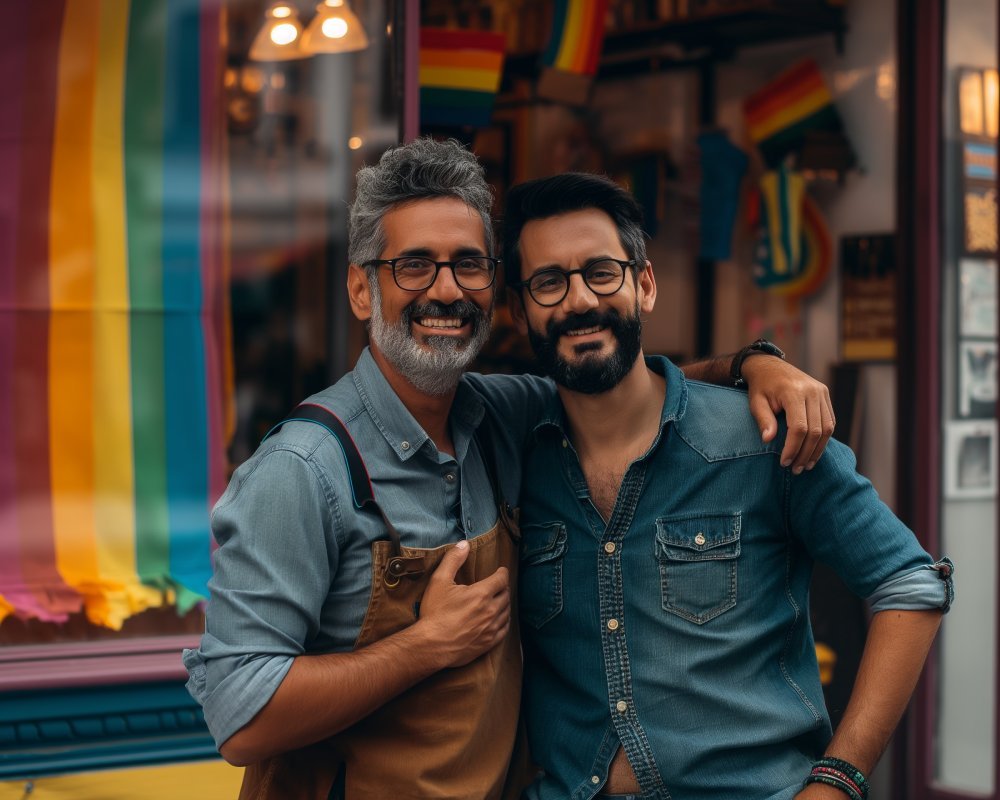
What Are Gay Myths? With Science and Facts
1. Introduction – What Are Gay Myths? With Science and Facts
1.1. Defining “Gay Myths” and Their Social Impacts
In many societies, conversations about sexuality and gender remain clouded by misconceptions, rumors, and deliberate falsehoods—commonly referred to as “Gay Myths.” These include claims that homosexuality is a choice, that gay men cannot form stable relationships, or that LGBTQ people pose a threat to children. Such myths do not only impact gay men; they extend across the entire LGBTQ+ spectrum, contributing to stigma for lesbian, bisexual, transgender, non-binary, and queer individuals.
Why do these myths matter? Falsehoods about sexual orientation and gender identity shape public opinion, inform policy debates, and influence personal relationships. The result often includes social ostracism, discriminatory legislation, or even violence against LGBTQ+ people. Misconceptions about queer identities can also cause significant psychological distress, leading individuals to struggle with self-acceptance or hide their orientation out of fear.
Throughout history, myths about homosexuality and other non-heteronormative identities have been perpetuated by cultural norms, religious institutions, political propaganda, and biased media representation. It’s not an overstatement to say that the widespread acceptance or rejection of these myths can shape an entire society’s approach to fundamental issues: civil rights, healthcare, education, family life, and more.
1.2. The Importance of Debunking Falsehoods with Science and Facts
Why do we need science to debunk these myths? Because personal beliefs, cultural practices, and even political agendas can distort reality. Objective, peer-reviewed research provides the foundation we need to separate fact from fiction. Over the past several decades, researchers in psychology, sociology, biology, and other fields have compiled a robust body of evidence demonstrating that homosexuality is a normal variation of human sexuality. The American Psychological Association (APA), the World Health Organization (WHO), and many other reputable health bodies have consistently affirmed that being lesbian, gay, bisexual, or transgender is not a mental disorder.
Moreover, LGBTQ myths debunked with science and facts can shift societal attitudes, leading to better mental health outcomes for queer individuals and more supportive environments in families, workplaces, and schools. When communities recognize that these myths lack a factual basis, the path to acceptance and equitable treatment becomes more straightforward.
1.3. Scope of This Blog
This blog offers a deep dive into “What Are Gay Myths? With Science and Facts” by exploring the following key areas:
- Historical origins of anti-LGBTQ myths and how they persist in modern times
- A breakdown of the top 10 and top 20 anti-gay myths, each addressed with evidence-based refutations
- A close look at how these myths impact not just gay men, but lesbian women, transgender people, bisexual and pansexual folks, intersex individuals, and the broader queer community
- Data-driven insights on relationship longevity, mental health, and more, particularly debunking the notion that gay relationships don’t last
- Comparator tables summarizing common myths versus verified facts
- Strategies for educators, activists, and allies to help combat misinformation and support LGBTQ people
Whether you identify as part of the LGBTQ+ community, consider yourself an ally, or simply wish to expand your understanding of sexual orientation and gender diversity, this comprehensive guide should offer clarity and empower you with factual knowledge. Let’s begin by looking at how these myths first took shape, setting the stage for the many misconceptions we still see today.
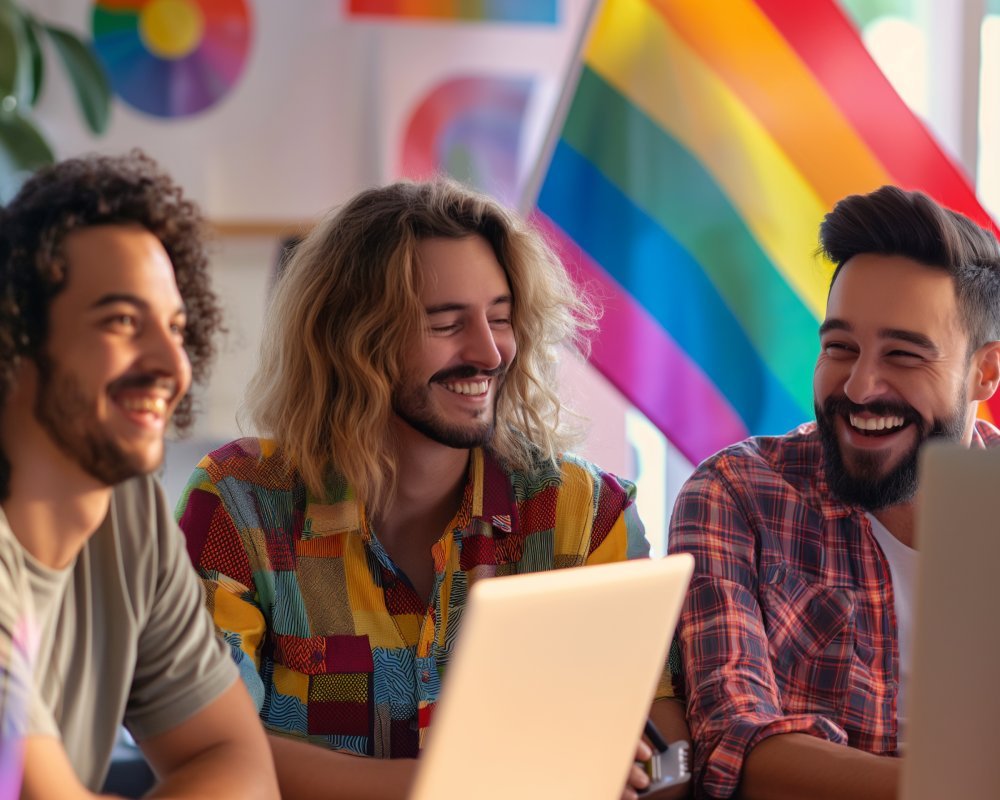
2. Historical Context: How Anti-LGBTQ Myths Take Root
2.1. Early Religious and Cultural Beliefs
The phenomenon of Myths About Homosexuality is not new; it’s rooted in centuries of shifting cultural, religious, and legal frameworks. In many pre-colonial societies—whether in Africa, the Americas, or the Pacific—same-sex relationships and diverse gender expressions existed without overt condemnation. With the spread of certain religious doctrines and colonial powers, however, new norms were imposed. Biblical interpretations, for instance, often labeled same-sex intimacy as sinful, while colonial administrators codified anti-sodomy laws.
This institutional disapproval fostered an environment where myths about homosexuality flourished. For example, the belief that being gay was a moral failing or a form of demonic possession took root in places where conservative religious teachings held sway. Over time, these myths were woven into social structures, shaping the cultural lens through which LGBTQ people were viewed.
2.2. Colonial Laws and Modern Misconceptions
Many countries that were once under British colonial rule (like India, Nigeria, and Jamaica) inherited Victorian-era laws that criminalized same-sex activity, reinforcing the idea that homosexuality was unnatural or criminal. These legal frameworks justified discrimination and sometimes violence, embedding in the public psyche a sense of moral panic around non-heteronormative identities.
In the 20th century, as some nations began repealing these archaic laws, the myths didn’t simply disappear. They evolved, adapting to new contexts. Politicians or religious leaders might exploit these misconceptions to rally conservative support, framing LGBTQ activism as an erosion of “traditional values.” The notion of a “gay agenda” gained traction in certain circles, suggesting that LGBTQ people aimed to undermine societal norms—a narrative that persists in many places to this day.

2.3. The Role of Media in Reinforcing or Challenging Stereotypes
Media portrayals can either entrench or challenge Myths That Stigmatize LGBTQ People. Early film and television often depicted gay individuals as tragic figures, villains, or laughingstocks. This misrepresentation contributed to the idea that being gay was linked to depravity, mental instability, or comedic abnormality. News coverage, too, often sensationalized LGBTQ events or criminal cases, feeding into stereotypes about predatory behavior or moral corruption.
However, the latter part of the 20th century and early 21st century saw a renaissance in media representation—shows like “Will & Grace,” “Queer as Folk,” and “Orange Is the New Black” offered more complex, humanizing depictions of queer life. This shift didn’t just reflect changing social attitudes; it also helped shape them by exposing broader audiences to LGBTQ perspectives. Even so, the existence of more inclusive programming does not erase the longstanding influence of negative portrayals—especially in regions where conservative media still dominates.
Key Points:
- Anti-LGBTQ myths have historical, political, and cultural roots that trace back centuries.
- Colonial laws and conservative religious teachings significantly entrenched these myths.
- Modern media can serve as either a destructive force (by perpetuating stereotypes) or a liberating platform (by offering more accurate and empathetic portrayals).
Having established how these myths originated and evolved, we can now dive deeper into the specific myths themselves. In the following sections, we’ll dissect the most pervasive falsehoods about homosexuality, referencing sexual orientation myths & facts to demonstrate why these claims are baseless. By understanding the history, we can better combat the present-day implications of these harmful stereotypes.
Advertisement · Scroll to continue
Recommended
3. Myths About Homosexuality: A Comprehensive Overview
3.1. Myth vs. Reality: Understanding Sexual Orientation Myths & Facts
Sexual orientation refers to the enduring pattern of romantic or sexual attraction (or both) to others—this can be attraction to people of a different gender (heterosexual), the same gender (homosexual), multiple genders (bisexual, pansexual), or no particular gender (asexual, demisexual under certain conditions). Despite decades of scientific and sociological research, myths abound:
- Myth: Homosexuality is a modern trend or fad.
- Fact: Historical records, from ancient Greece to pre-colonial African societies, reveal that same-sex relationships and diverse sexual orientations have existed in all documented cultures.
- Myth: Sexual orientation is determined by a single “gay gene.”
- Fact: Current science suggests a complex interaction of genetic, hormonal, and environmental factors, with no single “switch” that turns homosexuality on or off.
- Myth: Homosexuality is contagious or learned.
- Fact: You cannot “catch” a sexual orientation from media or peers. Studies repeatedly show that sexual orientation forms independently of external influences like upbringing alone.
Understanding these distinctions is crucial because misconceptions can shape public policy, parental attitudes, and personal mental health. When false narratives become societal norms, they manifest as hate crimes, unjust laws, and internalized stigma.
3.2. Societal Pressures and Stigma as a Source of Misinformation
Stigma fosters a cycle of disinformation. People who grow up hearing that being gay is “wrong” or “sinful” may not question these narratives, thereby perpetuating them. Families might pressure their children to undergo “conversion therapy” in the mistaken belief that sexual orientation can be changed. Churches or religious communities that emphasize “praying away the gay” reinforce the idea that being LGBTQ is a choice or spiritual failing—despite the overwhelming consensus among mental health professionals that orientation is innate and cannot be willed away.
In many countries, anti-gay rhetoric is amplified by political or religious leaders seeking to galvanize public support. By framing homosexuality as a threat to societal or moral integrity, they divert attention from other pressing issues—like corruption, economic inequality, or failing institutions—and rally constituents around a common scapegoat.
3.3. Why These Myths Persist Despite Scientific Evidence
If science overwhelmingly debunks these myths, why do they persist?
- Confirmation Bias: People tend to seek out information that reaffirms their beliefs. Those who are homophobic may dismiss research that contradicts their worldview.
- Cultural Reinforcement: Traditions and social norms can exert powerful pressure to conform, even when evidence contradicts them.
- Lack of Access to Credible Information: In regions with poor education systems or state-controlled media, individuals might not have exposure to reputable sources or diverse perspectives.
Additionally, the complex interaction of religion, politics, and culture can stifle open dialogue. Changing hearts and minds often requires direct contact with LGBTQ individuals—studies show that personal relationships with queer friends or family members significantly reduce prejudice. In the absence of these relationships, myths remain unchallenged.
Having laid out a broad overview, we’ll next explore these misconceptions in more granular detail. The next section focuses on 10 Anti-Gay Myths Debunked, providing evidence-based refutations and highlighting the harm each myth inflicts. Consider this a toolkit for countering erroneous statements you might encounter at family gatherings, online discussions, or in the workplace.
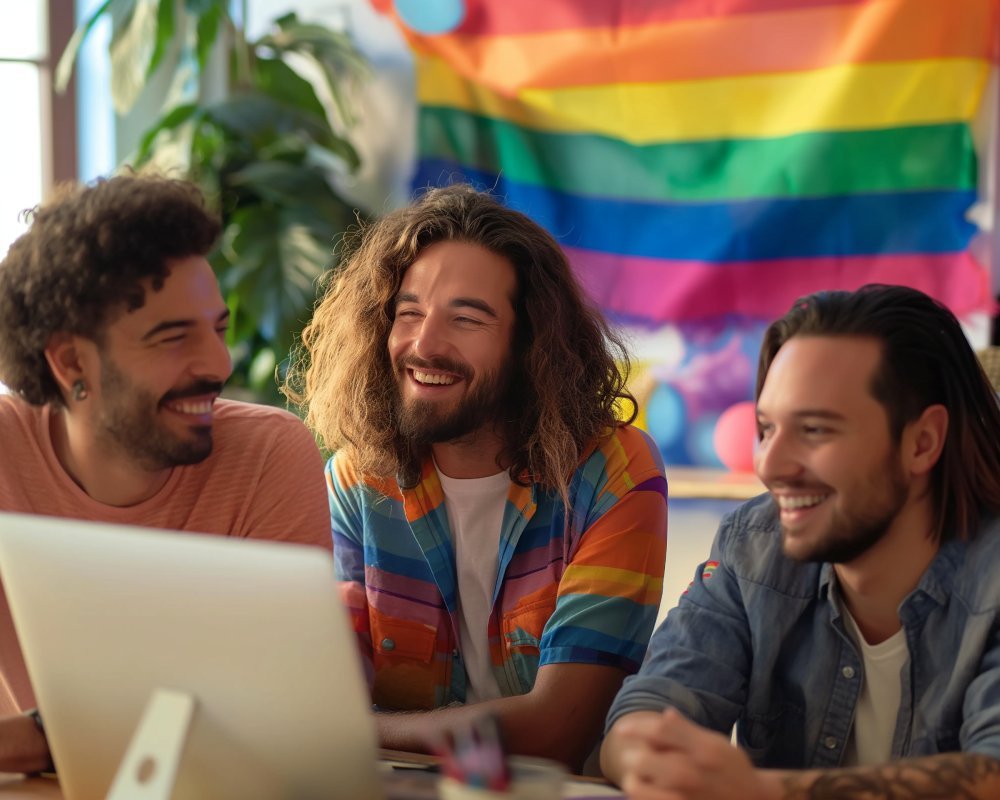
4. 10 Anti-Gay Myths Debunked
Below, we analyze ten of the most frequent myths about gay men—and by extension, LGBTQ+ people—alongside concise science-based refutations. This list is by no means exhaustive, but it offers a foundation for debunking harmful misconceptions.
4.1. MYTH #1: Being Gay Is “Just a Phase”
Reality: Sexual orientation is not a whimsical choice or temporary condition. Extensive research in psychology and neuroscience points to a combination of biological, genetic, and hormonal factors that shape a person’s orientation. While sexual fluidity does exist for some individuals, they don’t “grow out of” being gay or lesbian; rather, their understanding of their orientation may evolve. Dismissing it as a “phase” undermines the validity of LGBTQ identities, reinforcing stigma and preventing open dialogue.
4.2. MYTH #2: Homosexuality Is Caused by Trauma or “Bad Parenting”
Reality: Decades of psychological research reject the notion that childhood trauma or an overbearing mother (or absent father) “makes” someone gay. The American Psychological Association states unequivocally that no particular parenting style or single life event “converts” a child’s orientation. This myth arises from outdated Freudian theories or moral panic, lacking empirical support.
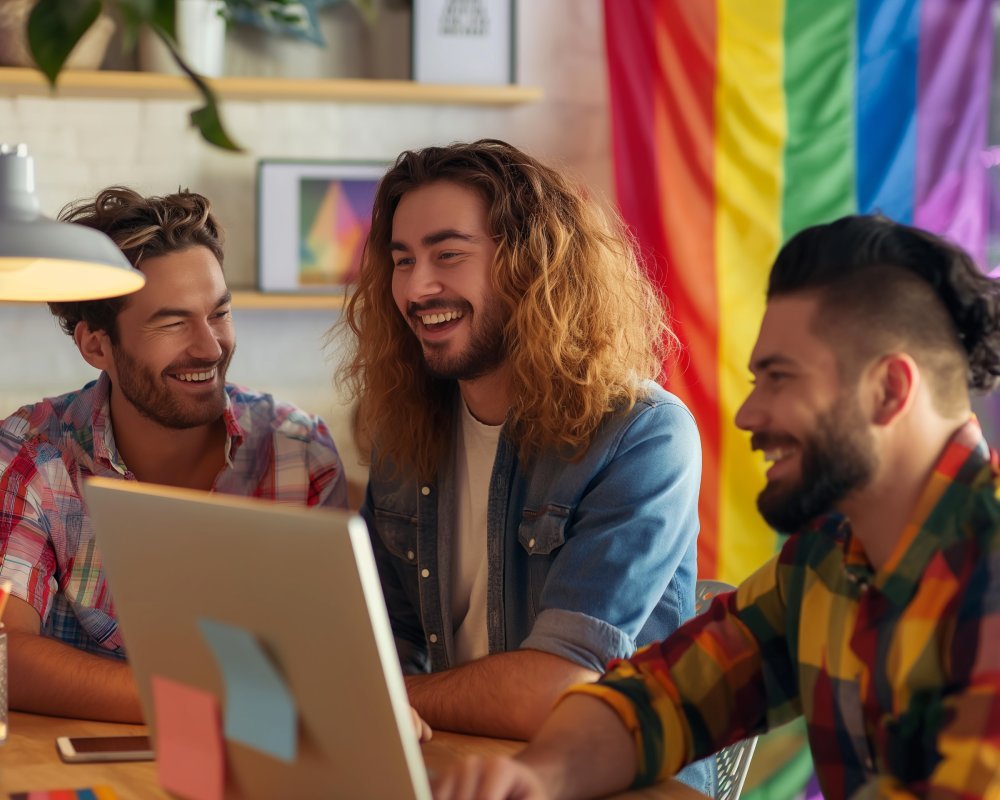
4.3. MYTH #3: You Can “Pray Away the Gay”
Reality: Conversion therapy, also known by euphemisms like “reparative therapy,” has been discredited by every major mental health organization in the United States and many worldwide. Studies reveal it can cause severe psychological harm, including depression, anxiety, and suicidal ideation. Sexual orientation is not a mental illness; there is no ethical “cure” for something that isn’t a disorder.
4.4. MYTH #4: Gay Men Are Predators or Hypersexual
Reality: This myth frames gay men as sexually aggressive or indiscriminate. In truth, sexual behavior varies widely across individuals regardless of orientation. Psychological studies show no correlation between homosexuality and predatory behavior. Conflating same-sex attraction with pedophilia or promiscuity is an inflammatory tactic often used by extremist groups to stoke fear and justify discrimination.
4.5. MYTH #5: LGBTQ People Recruit Children or Influence Their Orientation
Reality: One of the most destructive lies is that gay adults “recruit” children into homosexuality. Sexual orientation cannot be forced or taught. If parental influence dictated orientation, nearly all LGBTQ people with straight parents would be heterosexual themselves—which is obviously untrue. The notion that a child exposed to LGBTQ individuals will “turn gay” ignores the fact that children routinely grow up around straight couples yet still identify as queer.
4.6. MYTH #6: Homosexuality Is Unnatural and Unhealthy
Reality: Over 1,500 animal species display same-sex behavior, showing that homosexuality is part of the natural spectrum of sexuality. Psychological and medical bodies affirm that being LGBTQ is not inherently harmful; mental health challenges often stem from social discrimination, not from orientation itself.
4.7. MYTH #7: Gay Men Don’t Form Long-Lasting Relationships
Reality: The belief that queer relationships are inherently doomed is not supported by data. Many same-sex couples experience the same joys, challenges, and long-term commitment as heterosexual couples. Research suggests that, when given legal and social support, LGBTQ couples often thrive just as well—or better—than straight couples in terms of relationship satisfaction.
4.8. MYTH #8: All Gay Men Are Effeminate, All Lesbians Are Masculine
Reality: Stereotypes about effeminacy or masculinity do not define sexual orientation. Gender expression is personal and can vary across the entire spectrum. While some gay men are more openly expressive in ways culturally perceived as “feminine,” others are not. The same applies to lesbians, many of whom exhibit a broad range of presentation.
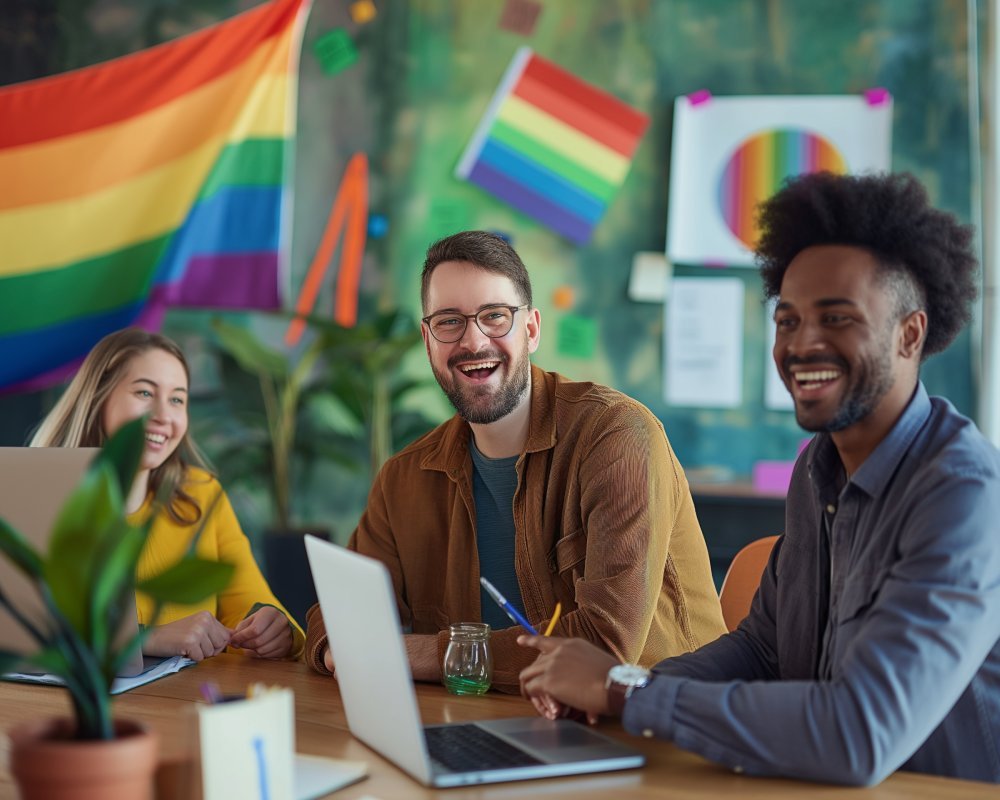
4.9. MYTH #9: HIV/AIDS Is a “Gay Disease”
Reality: HIV/AIDS affects individuals of all orientations. While HIV first garnered wide attention in gay communities in the 1980s, it is not restricted to them. Today, heterosexual transmission accounts for a significant portion of global HIV cases, and unsafe needle practices also contribute to its spread. Labeling HIV as “gay” not only misrepresents epidemiological data but also hinders effective prevention by perpetuating false safety assumptions among straight people.
4.10. MYTH #10: Queer People Are “Mentally Ill” by Default
Reality: Homosexuality was declassified as a mental disorder by the American Psychiatric Association in 1973, and by the World Health Organization in 1990. Being LGBTQ does not inherently predispose someone to mental illness. While queer individuals face higher rates of depression and anxiety, these disparities are largely linked to societal stigma, discrimination, and lack of support networks.
Having briefly outlined these ten fundamental myths, we’ll expand on additional misconceptions in the next section, the Top 20 Anti-Gay Myths, covering broader societal narratives like “the gay agenda,” religious objections, and the conflation of homosexuality with deviance. Armed with the science-based facts provided here, readers can begin dismantling the harmful beliefs that fuel anti-LGBTQ sentiments and policies.
5. Top 20 Anti-Gay Myths: Expanded Insights and Science-Based Refutations
While the ten myths outlined above frequently surface in everyday discourse, there are many more distortions that further stigmatize LGBTQ people. Below is a deeper exploration of Top 20 Anti-Gay Myths, offering broader context and additional scientific or sociological insights.
5.1. Unpacking the Pseudoscience Behind “Gay Conversion” Theories
Why It Persists: Certain religious or culturally conservative groups market “conversion therapy” as a therapeutic method, but mainstream medical associations universally condemn it. Despite the lack of scientific support and evidence of harm, it continues due to ideologically driven institutions and unscrupulous practitioners.
Refutation: Peer-reviewed studies confirm that orientation cannot be altered voluntarily. Endorsement of these therapies often correlates with higher suicide rates among participants.
5.2. Homosexuality in Nature: A Look at Animal Behavior
Myth: Being gay is “unnatural” or unique to humans.
Fact: Scholars have documented homosexual or bisexual behavior in species ranging from penguins to primates. Biologists like Joan Roughgarden have published extensive research on this phenomenon, indicating that same-sex pairings exist in roughly 8% to 10% of studied species.
5.3. LGBTQ History and Cultural Diversity: Global Perspectives
In many non-Western cultures, fluid notions of gender and sexuality have long been accepted (e.g., the hijra community in South Asia, two-spirit identities among some Indigenous peoples). Anti-gay myths often ignore these cultural variations, framing homosexuality as a Western import or colonial concept—when, in reality, Western colonialism introduced many homophobic laws.
5.4. Common Religious Arguments vs. Modern Theological Approaches
Myth: “The Bible condemns homosexuality as an abomination.”
Fact: Biblical scholarship reveals that many so-called “anti-gay” verses are context-specific, often referencing non-consensual acts or temple prostitution rather than stable, loving same-sex relationships. Progressive religious denominations endorse LGBTQ inclusivity, citing overarching themes of love and justice.

5.5. The “Deviant Behavior” Trope: How It Harms Society
Portraying homosexuality as deviant can foster harassment, hate crimes, and marginalization, discouraging people from seeking education about safe sex, mental health resources, or legal protection. Over time, these stereotypes also seep into law enforcement and judicial systems, sometimes leading to unjust policing and trials.
5.6. Fear Tactics Around “Gender Confusion”
Critics warn that visibility of LGBTQ people leads to “gender confusion” in children, stoking parental anxieties. This argument lumps together issues of sexual orientation and gender identity, obscuring the distinction between them. Scientific consensus indicates that exposure to diverse identities fosters empathy and acceptance, not confusion.
5.7. Economic Myths: Impact of Gay Households on Society
Some claim that supporting LGBTQ rights, including same-sex marriage, hurts economies—allegedly by undermining the family structure. Contrary Evidence: Studies show that marriage equality can boost local economies through increased wedding expenditures, tourism, and stable households that contribute to tax bases.
5.8. Political Propaganda: Weaponizing LGBTQ Rights
Politicians sometimes depict LGBTQ advocacy as a wedge issue, inciting fear that “gay rights” overshadow religious liberty or parental rights. This fosters an “us vs. them” mindset, overshadowing the fact that civil liberties are not zero-sum. Affirming LGBTQ individuals does not negate others’ freedoms; it simply ensures equal treatment.
5.9. Misinterpretation of “Family Values”
Myth: Gay couples can’t form real families or instill morality in children.
Fact: Research on same-sex parenting reveals children raised by LGBTQ parents fare as well as those raised by heterosexual parents in all major developmental markers. Love, stability, and support remain the essential components of healthy family environments.
5.10. Conspiracy Theories: The “Gay Agenda”
One of the most pervasive myths is that a “global gay agenda” exists to undermine heteronormative societies. This conspiracy theory imagines an orchestrated movement of LGBTQ elites controlling media, education, and government. In reality, the diverse and decentralized LGBTQ community shares no single covert plan—activists merely seek equality, safety, and recognition.
Concluding Thoughts on Top 20 Anti-Gay Myths:
- These myths serve as tools for disenfranchisement, often rooted in ignorance, fear, or deliberate manipulation.
- Scientific and social evidence consistently refutes them, yet they persist in environments lacking critical media, quality education, or open discourse.
- Understanding these myths in context aids in effectively dismantling them, paving the way for inclusive policies and social acceptance.
Next, we’ll delve into additional LGBTQ myths debunked with science and facts, focusing on how mainstream professional organizations (APA, WHO) address issues like the biology of sexual orientation, mental health, and broader social implications. This evidence underscores the inherent validity of LGBTQ identities, countering centuries of misrepresentation.
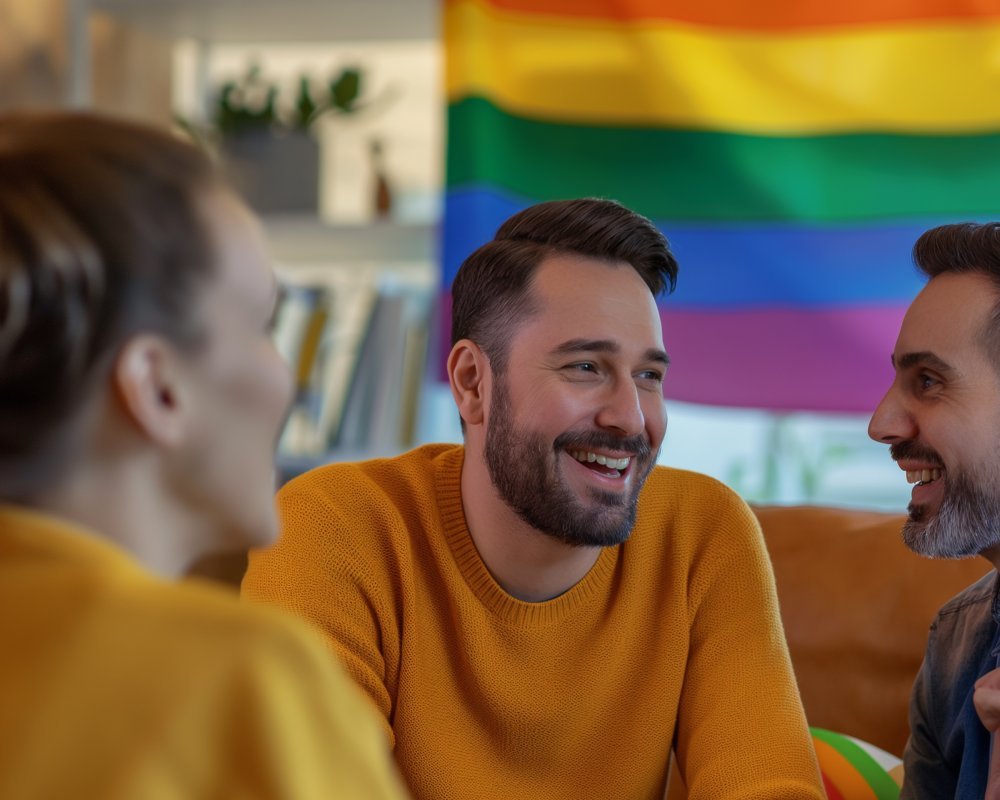
Advertisement · Scroll to continue
Recommended
6. LGBTQ Myths Debunked with Science and Facts
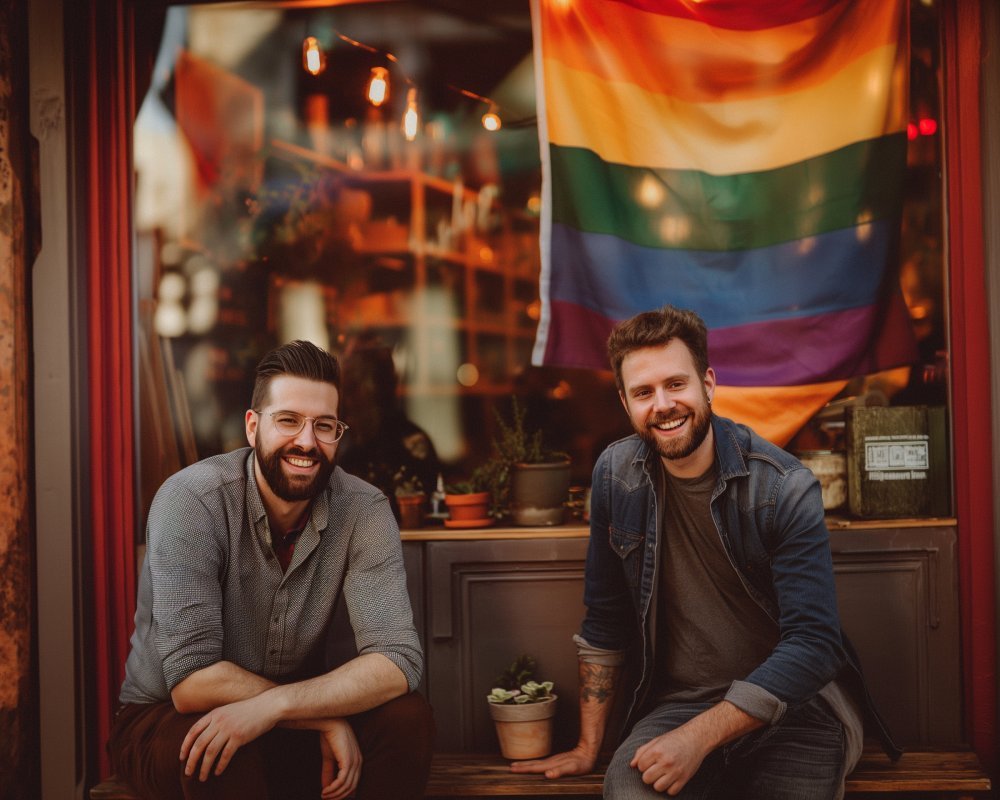
6.1. Genetics and Biology of Sexual Orientation
One prevalent myth is that there must be a single “gay gene,” or else homosexuality is a lifestyle choice. Reality is far more nuanced. Twin studies suggest a genetic component—identical twins show higher concordance for homosexuality compared to fraternal twins—but not 100%. Hormonal influences in utero also appear to contribute. Several major studies propose a multifactorial model, with variations in gene expression plus environmental triggers playing roles. This parallels how other complex traits (intelligence, personality) develop.
Key Takeaways:
- Sexual orientation is neither 100% genetic nor 100% environmental.
- The interplay of biology and personal experience shapes an individual’s orientation.
- Simplistic arguments about “no gay gene found” ignore the complexity of human genetics.
6.2. Psychological Consensus: APA, WHO, and Other Health Organizations
Sexual Orientation Myths & Facts often revolve around claims that homosexuality is a mental disorder. The American Psychiatric Association removed homosexuality from its list of mental illnesses in 1973, a stance mirrored by WHO and numerous global bodies. Subsequent meta-analyses confirm that being LGBTQ does not inherently cause mental distress—discrimination and social exclusion do.
In the 2018 WHO revision of the International Classification of Diseases (ICD-11), being transgender was also depathologized and shifted from a mental disorder classification to a broader health category focusing on identity, effectively separating it from mental illness. This shift reflects contemporary research that sees gender dysphoria as a condition necessitating care only if the individual experiences distress, not as a disorder intrinsic to their identity.
6.3. Social Science Evidence on Well-Being, Parenting, and Relationships
Parenting: Comprehensive studies by scholars such as Charlotte J. Patterson and Nanette Gartrell demonstrate that children of same-sex parents exhibit developmental outcomes—academic achievement, social functioning, self-esteem—comparable to children of heterosexual couples. Prejudice, rather than parental orientation, can create challenges for these children.
Relationships: The notion that gay or lesbian couples are doomed to instability conflicts with longitudinal research showing they possess equal potential for long-term commitment and happiness. Factors such as communication skills, conflict resolution, and emotional support predict relationship longevity, not the gender composition of the couple.
Community Impact: Areas with inclusive policies see fewer hate crimes, better mental health outcomes, and higher productivity among LGBTQ residents. When legal hurdles like marriage bans are removed, the broader social climate often improves, indicating a correlational link between acceptance and overall community well-being.
6.4. Intersectionality: How Race, Gender, and Class Interact with LGBTQ Myths
When discussing LGBTQ myths debunked with science and facts, we must account for intersectionality. BIPOC (Black, Indigenous, and People of Color) LGBTQ individuals face compounded discrimination. Economic class, disability, or religious background further shape experiences of stigma. For instance, a queer Muslim woman in a conservative region may encounter layered myths that combine Islamophobic and homophobic stereotypes, making factual clarity even more crucial.
Why Intersectionality Matters:
- It reveals how a single “anti-gay myth” might morph when combined with racial or cultural prejudices.
- It underscores the need for multifaceted outreach and education strategies to effectively combat misinformation.
Armed with these insights, we can see how science—and broader social research—consistently dismantles the premises of anti-LGBTQ beliefs. However, these findings alone aren’t enough if they don’t filter into policymaking, media narratives, and everyday conversations. We’ll next explore Myths That Stigmatize LGBTQ People from a broader societal perspective, illustrating how misinformation yields tangible harm, especially for marginalized groups like youth and communities of color.
7. Myths That Stigmatize LGBTQ People: Broader Societal Consequences
7.1. Bullying and Mental Health Impacts
Myths About Homosexuality do more than just misinform; they pave the way for overt discrimination and harassment. When phrases like “gay is unnatural” or “lesbians hate men” circulate unchallenged, it legitimizes bullying in schools, workplaces, and online spaces. LGBTQ youth often experience heightened levels of harassment, leading to elevated risks of depression, substance misuse, self-harm, and suicide.
Stats to Note:
- According to The Trevor Project, LGBTQ youth are more than four times as likely to attempt suicide compared to their heterosexual peers.
- The presence of a Gay-Straight Alliance (GSA) or inclusive school policies significantly reduces these risks, demonstrating the direct impact of community-level acceptance.
7.2. Discrimination in Employment, Housing, and Healthcare
Misinformation also underpins structural discrimination. Employers who believe LGBTQ individuals are less stable or more prone to “deviant behavior” may be less inclined to hire or promote them. Landlords could refuse housing due to unfounded fears about property devaluation or neighbor discomfort. Healthcare providers might offer substandard care or refuse treatments based on moral objections. Collectively, these biases hamper queer people’s socioeconomic mobility and physical well-being.
Over the past decade, legislative steps in some regions—like the Equality Act in the U.S.—aim to outlaw discrimination in employment and public accommodations. But in places where such protections are absent, myths remain embedded in formal and informal institutions, perpetuating inequality.

7.3. Effect on Youth and Family Acceptance
For LGBTQ youth, family acceptance often determines life trajectories. Myths That Stigmatize LGBTQ People can drive parents to reject or punish their children upon coming out. Conversion therapy or forced institutionalization remain horrifying realities for some minors worldwide. These traumas impact academic performance, mental health, and future relationships.
Even well-intentioned families can inadvertently harm their children by believing they “just need to meet the right person” of the opposite sex, or that therapy can “fix” them. Guidance from scientifically informed mental health professionals can shift these attitudes, emphasizing unconditional love and respect for the child’s identity.
Cultural Nuances: Acceptance can vary across different ethnic or religious communities. For instance, among certain conservative immigrant groups, additional layers of cultural shame or fear of communal backlash complicate the path to acceptance. Efforts to debunk myths must therefore be culturally sensitive, involving community leaders, faith-based allies, and bilingual outreach programs.
In sum, these myths have tangible impacts that extend well beyond personal relationships. They shape entire institutions and societal norms, often creating environments in which queer individuals struggle for equality and basic safety. Conversely, debunking these myths fosters healthier schools, workplaces, and families, benefiting not only LGBTQ people but entire communities. Next, we tackle one of the most insidious misconceptions: “Gay relationships don’t last,” examining real-world data on LGBTQ couples’ longevity and satisfaction.

8. MYTH: Gay Relationships Don’t Last—The Truth About LGBTQ Partnerships
8.1. Actual Data on Relationship Longevity and Satisfaction
One of the most pervasive myths is the notion that same-sex couples are either hypersexual or incapable of maintaining stable, long-term relationships. The claim often cites anecdotal evidence or conflates casual dating practices with the entire spectrum of relationship experiences.
Reality:
- Longitudinal studies indicate that many gay and lesbian couples form deeply committed partnerships, sharing financial responsibilities, caring for family members, and supporting each other emotionally.
- Research from the Williams Institute shows that same-sex couples have similar relationship dynamics to opposite-sex couples, with factors like communication, mutual respect, and conflict resolution strongly predicting satisfaction.
8.2. Challenges Unique to LGBTQ Couples (and How Society Contributes)
What undermines stability in some gay relationships isn’t an inherent orientation flaw but rather external pressures. Discrimination, lack of legal protections, and limited social support can strain LGBTQ couples. For decades, same-sex partners were excluded from marriage benefits, hospital visitation rights, and tax advantages, forcing them to shoulder legal complexities that heterosexual couples never faced.
Additionally, internalized homophobia may cause emotional or psychological challenges. Growing up in a society that ridicules or condemns queerness can leave emotional scars, impeding trust or healthy communication. Yet, when these obstacles are addressed—through supportive policies, affirming counseling, or community acceptance—LGBTQ relationships blossom, often demonstrating remarkable resilience.
8.3. The Importance of Legal Recognition and Social Support
Marriage equality laws, civil unions, domestic partnerships—these legal frameworks validate same-sex relationships, conferring rights and societal recognition. Research post-legalization of same-sex marriage in countries like Canada, Spain, or the United States shows improvements in mental well-being among queer couples. Social support from friends, family, religious communities, or colleagues further alleviates stressors.
Key Data:
- A 2016 study in the journal Psychological Medicine found that states adopting same-sex marriage saw a reduction in suicide attempts among LGBTQ youth. This suggests that broader social acceptance has ripple effects on mental health, not just for couples but for the entire community.
By recognizing that relationship success is not about orientation but about mutual respect, open communication, and environmental support, we debunk the myth that gay partnerships are inherently transient. Next, we’ll explore Top Anti-Lesbian Myths, Top Anti-Trans Myths, and Top Anti-Queer Myths, revealing how similar misrepresentations extend to lesbian and transgender relationships, as well as individuals identifying anywhere along the queer spectrum.
9. Top Anti-Lesbian Myths, Top Anti-Trans Myths, and Top Anti-Queer Myths
While “gay myths” often focus on men, lesbian, transgender, and broader queer communities face their own set of damaging falsehoods. Let’s examine these misconceptions, highlighting the parallels and unique twists in each.
9.1. Stereotypes Targeting Lesbian Women: “Man-Hating,” “Unfeminine,” Etc.
- Myth: Lesbians are universally anti-men or “couldn’t find a husband.”
- Reality: Sexual orientation is about attraction, not hatred. Many lesbians have fulfilling friendships with men, just as straight women do.
- Myth: Lesbians are all “butch” or “masculine.”
- Reality: Gender expression varies widely among lesbians. Some present as more “femme,” others as more “masc,” and many reject binary labels altogether.
- Myth: “Lesbian bed death”—the idea that sexual intimacy disappears in long-term lesbian relationships.
- Reality: Studies on lesbian couples’ relationship satisfaction often show strong emotional connection and healthy intimacy levels. Like any couple, sexual frequency can vary over time.
9.2. Myths Around Trans Identities: “Confusion,” “Trend,” “Social Contagion”
- Myth: Transgender identity is a fad or a phase influenced by social media.
- Reality: Historical evidence of trans and gender-nonconforming individuals exists across cultures for centuries. Increased visibility is due to better social acceptance, not a new phenomenon.
- Myth: Trans people are “just confused” or mentally ill.
- Reality: While gender dysphoria can cause distress, the identity itself is not pathological. With affirming care, many trans individuals thrive psychologically.
- Myth: Allowing trans people to use restrooms matching their identity endangers women and children.
- Reality: No credible data supports this claim. Predatory behavior is illegal regardless of one’s identity. Trans folks are more likely to be victims of assault than perpetrators.

9.3. Bisexual and Queer Erasure: “Pick a Side” and Other Harmful Narratives
- Myth: Bisexual people are “confused,” “greedy,” or “going through a phase.”
- Reality: Bisexuality is a legitimate orientation. Many self-identified bisexuals maintain monogamous relationships or have stable polyamorous structures, just like other sexual orientations.
- Myth: “Queer” is just a slur—anyone using it is hateful or misguided.
- Reality: The term has been reclaimed by some communities as an umbrella or political identity. While context matters, many find it empowering.
- Myth: Pansexual or asexual identities don’t exist.
- Reality: Pansexual individuals can be attracted to all genders, while asexual individuals do not experience sexual attraction. These are well-documented orientations validated by psychological research and personal testimonies.
Intersectional Challenges: These myths often combine with sexist, racist, or ableist beliefs, reinforcing multiple layers of bias. For instance, a Black lesbian might face stereotypes linking her race and orientation to hypersexuality or aggression.
Addressing these myths involves the same strategies used for gay men: education, representation, legal protections, and open dialogue. By understanding the distinct ways in which prejudice targets each subgroup, advocates, allies, and policymakers can craft more nuanced interventions to combat misinformation. Next, we present Sexual Orientation Myths & Facts in a comparator table, offering a quick reference guide for debunking common lies.

10. Sexual Orientation Myths & Facts: A Comparator Table
To distill the complex discussions so far, below are two tables comparing the most common Top Anti-Gay Myths (along with anti-lesbian, anti-trans, and anti-queer variations) to their evidence-based refutations.
10.1. Table 1: Common Anti-Gay Assertions vs. Scientific Realities
| Anti-Gay Assertion | Scientific / Empirical Reality |
|---|---|
| Being gay is “unnatural” or a modern phenomenon. | Homosexual behavior is observed in over 1,500 animal species; historical records confirm same-sex relationships across cultures, eras, and continents. |
| Homosexuality is a mental disorder. | Major health bodies (APA, WHO) concluded it is not a disorder; distress often arises from societal discrimination, not orientation itself. |
| Gay couples can’t form stable, lasting relationships. | Long-term studies show same-sex couples can have the same levels of commitment and satisfaction as heterosexual couples, particularly when social stigma is lower. |
| LGBTQ people recruit or “turn” children gay. | Sexual orientation is not taught or contagious. If environment dictated orientation, nearly all LGBTQ people with heterosexual parents would be straight. |
| Homosexuality is caused by bad parenting or trauma. | Reputable science dismisses this; orientation is likely influenced by a blend of genetics, hormones, and complex developmental factors. |
| “Gay conversion therapy” can change orientation. | Discredited by every major mental health organization; proven harmful, increasing risks of depression and suicidal ideation. |
| HIV/AIDS is a “gay disease.” | HIV/AIDS affects all orientations; labeling it as “gay” fosters unsafe practices among straight populations and stigmatizes LGBTQ people. |
| All gay men are effeminate, all lesbians are masculine. | Gender expression is diverse within any orientation; stereotypes oversimplify individual variations in personality, style, and identity. |
| Homosexuality is morally wrong as per certain religious texts. | Many religious groups embrace LGBTQ inclusion, citing broader scriptural values of love and justice; scholarly interpretation often counters literalist readings. |
| Being gay leads to loneliness or unhappiness. | Higher mental health challenges correlate with discrimination, not orientation. In affirming environments, LGBTQ people thrive just as well as others. |
10.2. Table 2: Mythical Arguments vs. Evidence-Based Counterpoints
| Mythical Argument | Evidence-Based Counterpoint |
|---|---|
| MYTH: Lesbian women are “man-haters” or lacking male attention. | FACT: Sexual orientation is about preference, not hatred. Many lesbians have deep platonic bonds with men. Lack of male romantic interest does not equate to animosity toward men. |
| MYTH: Trans people are “just confused” or following a trend. | FACT: Trans identities have existed globally for centuries. Growing acceptance and better visibility do not constitute a fad; they reflect increased recognition of authentic identities. |
| MYTH: Bisexuals are promiscuous or simply “undecided.” | FACT: Bisexuality is a stable orientation for many. Relationship structures vary from monogamous to polyamorous, similar to heterosexual or homosexual individuals. |
| MYTH: Queer is solely a slur. | FACT: “Queer” has been reclaimed by some as a flexible identity label acknowledging the spectrum of gender/sexual diversity, though context and self-identification remain crucial. |
| MYTH: Anti-gay laws preserve “family values.” | FACT: Family values thrive on stability, mutual respect, and love—values not exclusive to heterosexual households. Anti-gay laws disrupt families by denying legal protections and social support. |
| MYTH: Same-sex marriage threatens societal reproduction rates. | FACT: Birth rates are influenced by multiple socioeconomic factors. Additionally, LGBTQ people can become parents through adoption, surrogacy, fostering, or co-parenting arrangements. |
| MYTH: Being around LGBTQ people makes children question their own identity “too early.” | FACT: Exposure to diversity fosters empathy and understanding. Awareness does not dictate orientation; it merely normalizes the existence of different identities. |
| MYTH: The “gay agenda” is a secret plot to convert everyone. | FACT: There is no monolithic “agenda”; LGBTQ activists seek basic rights and freedoms—marriage equality, anti-discrimination laws, healthcare access—on par with heterosexual/cisgender people. |
These tables serve as quick references for correcting misinformation in discussions at home, work, or online. They highlight the consistency between Sexual Orientation Myths & Facts as upheld by scientific consensus and the lived experiences of millions in the LGBTQ community. Up next, we explore how debunking these myths benefits both individuals and society at large, improving mental health, social harmony, and policy environments.
11. Why Debunking Myths Improves Mental Health and Social Harmony
11.1. Reducing Internalized Homophobia and Self-Stigma
When Top Anti-Gay Myths saturate societal discourse, LGBTQ individuals often internalize negative messages, doubting their own worth or feeling shame about their identity. This phenomenon, known as internalized homophobia, can lead to chronic stress, difficulty in forming healthy relationships, and even self-destructive behaviors.
Impact:
- Higher Risk of Depression: Persistent self-stigma erodes self-esteem and fosters negative coping strategies.
- Delayed Coming Out: Fear of rejection or violence might cause some individuals to hide their orientation, missing out on genuine emotional connections.
- Barriers to Healthcare: Internalized stigma sometimes prevents people from seeking mental health support, sexual health resources, or testing and treatment for conditions like HIV.
By debunking myths, society sends a crucial message: “Your identity is valid, and you belong.” This shift can profoundly affect self-perception, helping individuals shed internalized prejudices and embrace self-acceptance.
11.2. Fostering Empathy and Community Support
Dispelling Myths About Homosexuality fosters empathy among those who might have previously held biased views. When neighbors, coworkers, or family members learn the evidence-based truths—that gay people form loving families, that trans individuals are not a threat, that queer folks contribute richly to cultural, economic, and social life—they become more open to inclusive relationships.
Communities that prioritize factual understanding tend to:
- Engage in Collaborative Solutions: Work collectively to address bullying, mental health, housing insecurity, and other issues affecting LGBTQ residents.
- Celebrate Diversity: Use Pride events or inclusive community programs as opportunities for bridge-building across different demographics.
- Reduce Hate Crimes: Fewer hateful incidents occur in neighborhoods where diversity is normalized and myths hold less sway.
11.3. Legal and Policy Implications of Dispelling Misinformation
Legislators and policymakers do not operate in a vacuum; they’re influenced by constituent beliefs, media narratives, and cultural attitudes. If a critical mass of the population recognizes that “gay relationships don’t last” is an unfounded myth, or that “homosexuality is unnatural” lacks scientific validity, it becomes harder for politicians to justify discriminatory policies.
Key Examples:
- Marriage Equality: As more citizens understood that LGBTQ couples could foster stable, loving families, support for same-sex marriage rose dramatically, culminating in historic legal changes in many countries.
- Anti-Discrimination Protections: Debunking the idea that queer workers are “less productive” or “immoral” strengthened calls for inclusive employment and housing laws.
- Healthcare Access: Recognizing that gender-affirming care benefits trans individuals underpins policy reforms ensuring coverage for transition-related medical services.
Ultimately, dismantling myths is not just an academic exercise—it has tangible consequences for personal well-being, social bonds, and institutional fairness. Having covered how busting falsehoods can transform mental health and communal relationships, we turn next to The Role of Media, Education, and Advocacy in Combatting Falsehoods, examining the dynamic interplay between these sectors and the quest for equality.

12. The Role of Media, Education, and Advocacy in Combatting Falsehoods
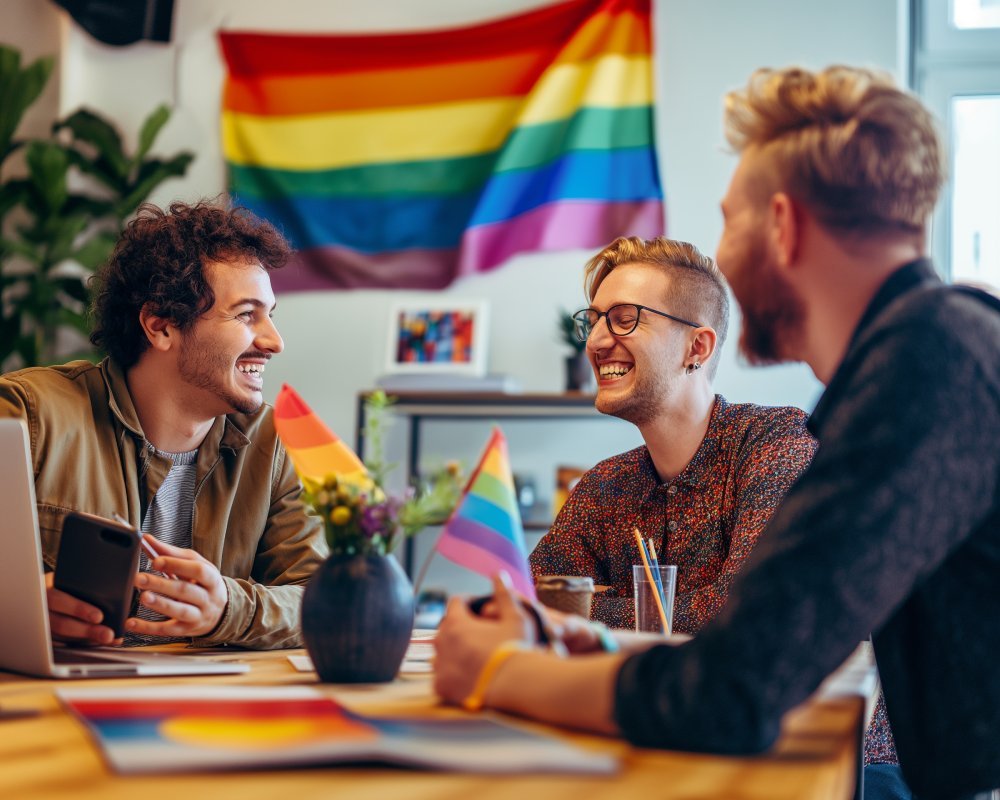
12.1. LGBTQ Representation in Film and Television
Media portrayal significantly shapes mainstream perceptions of LGBTQ issues. In past decades, gay or lesbian characters were often relegated to comedic relief or tragic storylines. Now, more inclusive shows like “Pose,” “Sex Education,” and “Schitt’s Creek” demonstrate the complexities of queer life—from family acceptance to career ambitions.
Positive Outcomes:
- Humanizing Visibility: Audiences empathize with multifaceted LGBTQ characters, challenging stereotypes.
- Cultural Shift: As these portrayals become normalized, jokes or slurs at the expense of LGBTQ people lose traction, making bigotry less socially acceptable.
However, not all representation is helpful. Tokenistic or exploitative depictions can perpetuate partial truths or reinforce harmful tropes, like hypersexualizing gay men or oversimplifying trans experiences.
12.2. School Curricula and Inclusive Teaching Materials
Education is a powerful tool against misinformation. Sexual orientation myths & facts can be integrated into curricula through history classes covering LGBTQ civil rights movements, literature lessons exploring queer authors, or health modules that address sexual health beyond heteronormative frameworks.
Benefits:
- Early Awareness: When students learn from a young age that variations in orientation and gender identity are part of human diversity, prejudices have less chance to take root.
- Safer School Environments: Inclusion fosters a sense of belonging for LGBTQ youth, reducing bullying and mental health challenges.
- Engagement of Parents: Transparent communication about curriculum content can ease parental concerns and correct misconceptions about “promoting” homosexuality.
12.3. Grassroots and Online Activism: Using Social Media Strategically
The internet offers unprecedented opportunities for LGBTQ myths debunked with science and facts to reach global audiences. Grassroots movements utilize hashtags, viral campaigns, and online support groups to combat hate speech or share personal stories that humanize queer experiences.
Key Strategies:
- Fact-Checking Initiatives: Platforms like Facebook, Twitter, or TikTok are increasingly adopting policies to curb disinformation. Allies and activists can report misleading content and provide reputable sources.
- Hashtag Movements: Campaigns such as #BornThisWay, #NoH8, or #LoveIsLove spread positive narratives, mobilizing support and celebrating diversity.
- Online Communities: Spaces like Reddit’s r/lgbt or specialized Discord servers allow for peer education, Q&A sessions, and emotional support—especially valuable for individuals in conservative or isolated environments.
Yet, digital activism faces challenges: trolls, organized hate groups, and misinformation can proliferate rapidly. This underscores the importance of robust moderation and continued vigilance in how messages are disseminated and verified.
In conclusion, it’s clear that media representation, educational reforms, and grassroots activism form the backbone of any sustained effort to debunk anti-LGBTQ myths. By harnessing these channels collectively, societies can create inclusive spaces that celebrate diversity rather than vilifying it. Our penultimate section examines the bigger picture of moving beyond myths, culminating in a final reflection on building an inclusive future.
13. Moving Beyond Myths: Toward an Inclusive Future
13.1. Building Allyship and Community Bridges
Creating an inclusive future requires allies—heterosexual and cisgender people who actively work to dismantle myths and support LGBTQ rights. Allyship can manifest in various forms: speaking out against workplace discrimination, donating to queer advocacy groups, or uplifting LGBTQ voices on social media platforms. Engaging allies fosters a culture where it’s not just LGBTQ people fighting for their rights but entire communities standing in solidarity.
Bridge-Building Strategies:
- Interfaith Collaboration: Bringing together religious leaders open to inclusive interpretations can shift communities once steeped in anti-gay rhetoric.
- Cross-Movement Solidarity: Collaborations with racial justice, feminist, disability, or environmental groups can underscore the intersectional nature of oppression, forging broader coalitions.
- Cultural Exchange: Events like Pride parades, film festivals, and panel discussions can break down ignorance and spark mutual understanding.
13.2. Importance of Continuous Research and Policy Reforms
Social and scientific research into LGBTQ issues must remain ongoing. As society evolves, new questions arise—such as navigating gender identity in digital spaces, protecting the rights of intersex infants, or understanding how climate change disproportionately affects marginalized groups.
Policy reforms should address:
- Healthcare Access: Expanding insurance coverage to hormone treatments, mental health care, and gender-affirming surgeries.
- Legal Recognition: Advocating for marriage equality where it’s not yet established, securing adoption rights, and ensuring anti-discrimination laws are enforced.
- Educational Frameworks: Mandating LGBTQ-inclusive sex education, requiring fair representation in textbooks, and training teachers to handle bullying effectively.
When policymaking reflects accurate information about LGBTQ lives, society can shift from tolerating difference to celebrating it.
13.3. The Next Frontier: Global Perspectives and Intersectional Liberation
Globally, acceptance varies widely. While Western Europe, parts of the Americas, and some Asian nations have made strides, numerous regions continue to criminalize same-sex intimacy or enforce severe punishments. In these contexts, debunking myths becomes a matter of life and death. International human rights organizations often coordinate efforts to protect LGBTQ refugees fleeing oppressive regimes and support local activists working on the front lines.
Intersectional Liberation means recognizing that no single legislative victory (e.g., same-sex marriage) solves all issues for all LGBTQ folks. Racial inequities, economic disparities, healthcare access, and gender-based violence still plague many, even in “liberal” countries. The goal is to create broad structural change that affirms the dignity of each individual across lines of race, class, gender, and orientation.
At this juncture, we see how Top Anti-Gay Myths and Myths About Homosexuality are not merely academic concerns—they directly impact policy, daily life, global politics, and the quest for fundamental human rights. As societies move closer to accurate information and empathetic understanding, these myths lose traction, making space for authentic expressions of identity and community well-being. Let’s move into our concluding section, synthesizing the insights gathered and offering a call to action.

14. Conclusion

14.1. Summary of Key Points
In this exploration of “What Are Gay Myths? With Science and Facts,” we have:
- Established the Origins: Colonial laws, religious teachings, media stereotypes, and cultural traditions all contributed to a web of myths about homosexuality and broader LGBTQ identities.
- Debunked Myths with Evidence: From the claim that being gay is a “phase” or “unnatural” to fears around “gay recruitment” or “predatory behavior,” each finds no support in reputable scientific research or global health consensus.
- Addressed Other Subgroups: Top Anti-Lesbian Myths, Top Anti-Trans Myths, and Top Anti-Queer Myths demonstrate parallel patterns of misinformation, each refutable with data, personal narratives, and historical context.
- Explored Societal Consequences: Myths damage mental health, rationalize bullying and discrimination, and hinder equality in employment, housing, and healthcare. Conversely, debunking them fosters empathy, policy reforms, and safer communities.
- Outlined Paths Forward: Media representation, inclusive education, and grassroots activism stand as cornerstones of constructive change, while intersectional perspectives ensure no one is left behind.
14.2. A Call to Action: Knowledge, Empathy, and Engagement
Debunking Myths That Stigmatize LGBTQ People isn’t a one-time task—misinformation evolves, reemerging in new guises or through different channels. The onus lies not only on LGBTQ individuals but on allies, educators, policymakers, and media professionals. Three pillars can guide collective action:
- Knowledge: Stay informed via scientific research, reputable journalism, and credible advocacy organizations. Challenge yourself to unlearn biases.
- Empathy: Recognize that behind each myth stands a community of people affected by prejudice. Share stories, open dialogues, and practice active listening.
- Engagement: Vote for candidates who support LGBTQ rights, attend Pride events, donate to advocacy groups, or volunteer your skills—be it legal expertise, counseling, or media production—to serve marginalized populations.
14.3. Final Thoughts
In a world increasingly interconnected by technology, ignorance has fewer places to hide. Yet, the speed of information sharing can also amplify falsehoods. The solution is a vigilant commitment to truth: harnessing peer-reviewed science, validated historical accounts, and lived experiences to dispel the shadows of myth.
This journey has shown that Top 20 Anti-Gay Myths or any subset of such fallacies are remarkably persistent, often cloaked in religious fervor, political opportunism, or cultural inertia. They thrive where critical thinking is absent or where institutional power manipulates fear. By unmasking these myths and replacing them with fact-based narratives, we take a step closer to a society where each person’s dignity is acknowledged and celebrated.
May this extensive overview serve as both a reference and an inspiration—one that empowers readers to speak confidently against misinformation, champion inclusive policies, and uplift the voices of LGBTQ individuals worldwide. The fundamental message remains: every human being deserves to live free from prejudice, armed with the knowledge that their identity is valid, and supported by communities who value scientific truth and shared humanity.
Advertisement · Scroll to continue

More Recommended
Championing Visibility: The Power of LGBTQ+ Advertising Campaigns
Championing Visibility: The Power of LGBTQ+ Advertising Campaigns In today’s rapidly changing society, visibility and [...]
Beyond Pride Month: Building Year-Round Connections with Lesbian Customers
Building Year-Round Connections with Lesbian Customers: A Guide for Businesses As we celebrate Pride Month [...]
Can You Be Gay and Bisexual at the Same Time?
Can You Be Gay and Bisexual at the Same Time? – Being a part of [...]
The Role of Gay Bars in LGBTQ+ History
The Role of Gay Bars in LGBTQ+ History – Gay bars have played a significant [...]
The Power of Representation: How Gay-Owned Businesses are Shaping the Market
The Power of Representation: How Gay-Owned Businesses are Shaping the Market – Representation matters. It [...]
200 LGBTQ Quotes to Share During Pride Month
200 LGBTQ Quotes to Share During Pride Month Pride Month serves as an important time [...]
Does Trader Joeʼs support DEI?
Does Trader Joeʼs support DEI? – Trader Joe’s has increasingly been recognized for its commitment [...]
Beyond Pride Month: How Brands are Committing to Inclusivity Year-Round
Beyond Pride Month: How Brands are Committing to Inclusivity Year-Round – In recent years, the [...]
How to Optimize Your Gay Blog for Search Engines
How to Optimize Your Gay Blog for Search Engines – If you’re running a gay [...]